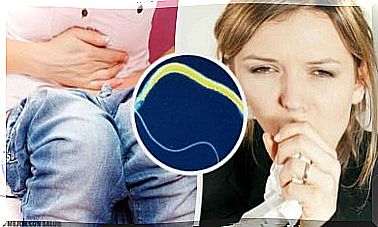Are Light Products Fattening?
Light products attract the attention of people who struggle with excess weight. However, are they as good as they say? Let us remember, first of all, that what is related to body weight has become one of the most important health concerns of our century.
Being obese is a risk factor in the development of diseases, in addition to determining your prognosis. For this reason, gradually, a series of dietary changes have been implemented.
Precisely, this concern about body composition has led the industry to launch light foods on the market . They are products that promise a lower caloric density than their analogues. However, they are not always the best option. For what reason? Next, we will explain the secrets behind this range of foods.
Light products contain fewer calories
Light products are characterized by providing fewer calories than their normal variant. This is achieved by restricting the fat in the product. However, on many occasions, the amount of simple sugars in food remains unchanged or has even been increased.
On the other hand, removing fat from food, unless it is of the trans type , is usually not a good idea. Fat-soluble vitamins are dissolved in this nutrient, for example that of group D. In this way, we are reducing the contribution of micronutrients to the body.
Continuing with the case of vitamin D, we are faced with an endemically deficient nutrient, if we further reduce its contribution, we can cause a health problem in the medium or long term.
The reserves of this micronutrient are limited, in addition, its deficit is associated with an increased risk of developing cardiovascular or inflammatory diseases, according to an article published in the Annual Review of Medicine.

They can incite excessive consumption
Although the caloric density of light products is lower than that of their counterparts, sometimes, knowing that we are facing a lighter product, we tend to ingest a greater amount of it. Therefore, the total energy consumed is greater than if we opted for the classic variety.
As if this were not enough, a greater volume of this product implies an even greater contribution of simple sugars and even additives. In this way, our state of health can be affected in the medium and long term.
How to plan a diet correctly?
Instead of looking for the least caloric foods on the market, it is better to base our diet on fresh products. Reducing the consumption of processed foods is beneficial in terms of reducing calories, sugars and additives.
This invariably translates into a reduction in the risk of developing complex diseases, such as diabetes, obesity and other metabolic disorders linked, in turn, with diet.
In addition, we must opt for little aggressive cooking methods and with little amount of oil. Thus, we limit the production of toxic and harmful substances for the body, such as acrylamide.
On the other hand, we must not neglect the intake of fats, although these must come from oily fish, nuts and vegetable oils. Limiting intakes of animal fat (although there is controversy on a scientific level) and trans fat can improve health.

Beware of light products !
Light products offer us a version with less calories. Not for this reason we should trust ourselves and stop reading the labels carefully. In many cases, the caloric reduction is due to a suppression of fats, which is compensated at the level of palatability with the addition of more amounts of simple sugars.
This, added to the tendency to consume more of this type of product due to lack of concern as far as caloric balance is concerned, can lead to a progressive worsening of the quality of our food.
A healthy lifestyle is one that combines a varied and balanced diet with regular exercise. To achieve the first we must increase the consumption of fresh products and reduce the consumption of processed ones.
Although it is possible to choose a variety of the light type , it is not advisable to neglect the consumption of fats, especially mono and polyunsaturated.









